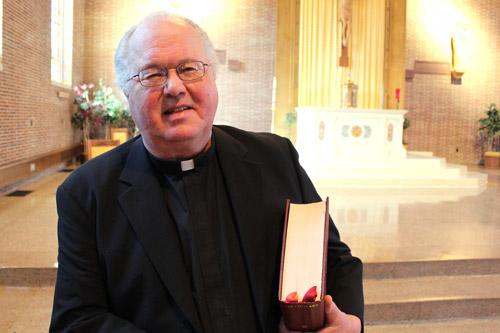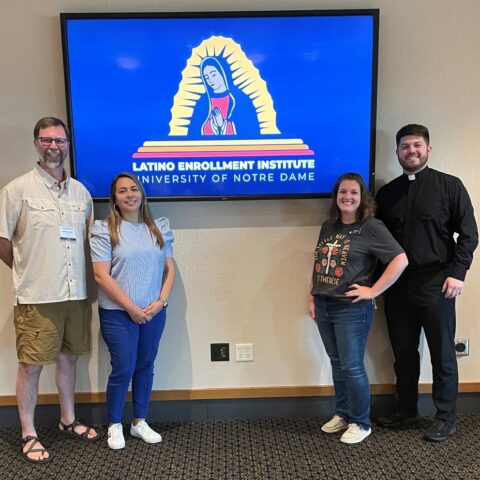The advance preparation many Arkansas parishes took to ready congregants for the 2011 changes to the Roman Missal, along with notes placed in pews to help worshipers, paid off with a relatively smooth transition to the new liturgy over the past year.
Msgr. Richard Oswald, diocesan director of divine worship, said verbal miscues have receded to a minimum as most of the faithful have incorporated the liturgical changes to weekly Mass with little difficulty.
“Overall, I’d say the changes were well-received and people have grown used to them quite well,” he said. “We’d used the other translation for so long, some people still stumble a little bit but we are fast overcoming that.”
The changes, implemented on Nov. 27, 2011, represent a truer and more faithful translation of the ancient rites. Changes ran the gamut from things only the celebrant would notice to conspicuous re-wording and additions such as, “through my fault, through my fault, through my most grievous fault,” during the Penitential Rite.
In a lot of cases, Catholics shrugged off new words and phrases as mere theological semantics, if they noticed them at all. Few take issue, for instance, with Jesus’ offering his disciples a “chalice” versus a “cup” during the Eucharistic Prayer.
However, in that very same sentence, Jesus is now quoted telling his apostles that his death will mean redemption, “for you and for many,” instead of, “for you and for all.” The change of just that one word sparked heated debate that continues to this day in some parts of the world.
Somewhere in the middle are words and phrases that simply took getting used to, such as saying, “And with your spirit,” instead of “And also with you.” While most adopted these through weekly repetition, Msgr. Oswald said many people also took the opportunity to research the source and rationale behind such changes. The resulting education on the liturgy was healthy, he said, on both sides of the altar.
“It was my experience that in trying to explain the changes, I gained a deeper understanding of what we were praying and what we were saying,” he said. “A lot of people also found passages in Scripture that are now word for word with what we say at Mass.”
Those who looked into the origins of the changes got a fascinating glimpse into the history of the Church, the Mass and the cycles of debate over sacred words and meanings.
For example, where last year’s congregants may have found the word “consubstantial” merely unfamiliar or unwieldy, the deeper debate over this mystery of faith first inflamed liturgical passions 1,700 years ago. The Council of Nicaea’s adoption of the term in 325 theoretically ended the linguistic battle, but the term again ran aground with the introduction of the Pauline Mass in 1970 before re-emerging in 2011.
Msgr. Oswald said such is sometimes the nature of changes that have come and gone. He said translations currently being studied and considered are sure to bring even more amendments in the undetermined future.
“I don’t think we will see any changes on the same scale as these, but there will be changes to different rites in the future as translations are studied,” he said. “It’s hard to know exactly when because these things take quite a long time.”




